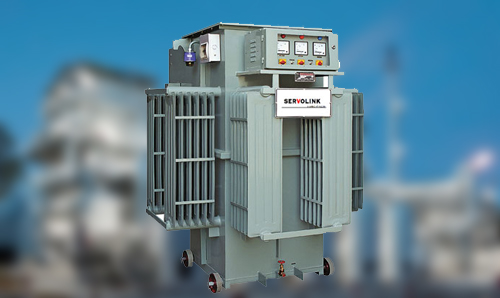
The voltage supplied to electrical equipment is controlled and stabilized by two different types of voltage stabilizers: servo stabilizers and static stabilizers. They are different in terms of their operating principles, features, and applications even though they have comparable functions. The following are the main distinctions between static stabilizers and servo stabilizers:
1. Working Principle:
Servo Stabilizer:
• Servo stabilizers operate on a closed-loop control system.
• They use a servo motor and an auto-transformer to continuously adjust the output voltage to maintain it at a constant level.
• The servo motor moves the carbon brush along the auto-transformer’s winding to vary the output voltage as needed.
Static Stabilizer:
• Static stabilizers work on a solid-state, electronic control system.
• They use power electronic devices like thyristors or IGBTs (Insulated Gate Bipolar Transistors) to control and regulate the output voltage.
• Static stabilizers do not have moving parts like servo motors.
Response Time:
• Servo Stabilizer:
• Servo stabilizers typically have a faster response time.
• They can quickly adjust the output voltage in real-time to compensate for voltage fluctuations.
• Static Stabilizer:
• Static stabilizers may have a slightly slower response time compared to servo stabilizers.
• While they can still respond quickly, the response time may vary depending on the specific design and components used.
Efficiency:
• Servo Stabilizer:
• Servo stabilizers are known for their high efficiency as they can precisely match the output voltage to the desired level, minimizing energy losses.
• Static Stabilizer:
•Static stabilizers are generally efficient but may have slightly higher losses due to the power electronic components involved.
Maintenance:
• Servo Stabilizer:
•Servo stabilizers require periodic maintenance because they have moving parts, such as the servo motor and carbon brush, which can wear out over time.
• Maintenance includes checking and lubricating moving parts, cleaning, and ensuring proper calibration.
• Static Stabilizer:
• Static stabilizers are relatively maintenance-free since they lack moving parts. They typically require less attention and have a longer service life.
Applications:
• Servo Stabilizer:
• Servo stabilizers are often used in applications where precise voltage control is critical, such as industrial and manufacturing processes, medical equipment, and sensitive laboratory equipment.
• They are suitable for situations where quick voltage corrections are needed.
• Static Stabilizer:
• Static stabilizers are commonly used in commercial and residential settings to protect sensitive electronics, computers, and appliances from voltage fluctuations.
• They are also suitable for applications where a slightly slower response time is acceptable.
In conclusion, both servo stabilizers and static stabilizers play a crucial part in voltage stability, but they differ in terms of how they function, how quickly they react, how much maintenance they need, and how they are used. The precise requirements of the electrical equipment and the desired level of voltage regulation will determine which option is best.
